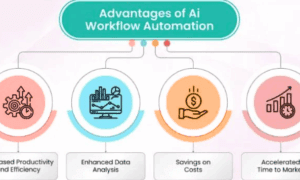The pressure on fintechs to innovate is intense, with organisations investing heavily to build and optimize digital platforms that meet consumer and regulatory expectations alike. At the same time, however, they need to deliver results against the backdrop of tighter cost controls and a widespread drive for efficiency.
In this context, the key digital ‘currency’ is data and like many industry sectors, exponential data growth is becoming a major issue for the fintech ecosystem. Vast volumes of information are being generated every day, including everything from transaction records and customer interactions to API logs, fraud detection data, and compliance documentation, among many other types.
Most of this (80%-90%) is unstructured, meaning it is not organized in a predefined format, making it difficult to store, classify, and analyze efficiently. Indeed, managing and utilizing unstructured data has become one of the biggest technology and process challenges seen in recent years.
Adding to the problem is that this data is typically spread across on-premises and cloud environments, with fintechs also required to retain datasets for extended periods to meet various governance requirements. For fintechs in particular, the sector’s appetite for APIs that enable real-time data exchange and integration across fintech systems, as well as real-time transactions and increasingly, AI workloads, is accelerating data growth even further.
The net result is that there are a great many organizations out there that don’t have a handle on how much data they have, let alone where it is in its lifecycle, what risk levels to attach to it and whether there is any value at all in paying to keep it. Among the various issues this creates is a storage problem, with many fintechs responding by simply adding more capacity.
On the face of it, this seems like a simple solution, but in reality, it creates a vicious cycle where more data requires more storage, leading to increased complexity, higher costs and reduced visibility. The subtleties are alarming, with 60% of organisations stating that half or more of their data is “dark,” i.e., stored but never used. To put it bluntly, this strategy is financially unsustainable.
A change of mindset
So, what needs to change and how? Firstly, it’s a question of mindset. Instead of continually adding capacity to cope with growth, which has been the traditional approach, fintechs need to treat unstructured data as a managed financial asset, not just a storage problem.
What needs to come to the fore instead is the concept of data lifecycle management, whereby data is identified, classified, and moved based on business value and regulatory requirements. In this situation, data management is no longer a firefighting exercise; the focus shifts to financial optimization.
The first step is visibility. Fintechs need a clear, enterprise-wide view of what data exists, where it resides, who owns it, and how it’s used. Without this, any attempt to control cost or mitigate risk will be incomplete and ineffective.
The next priority is governance and classifying data according to factors such as business value, regulatory requirements, and risk profile. Lifecycle policies should then determine what happens to each dataset, with high-value or frequently used data remaining on performant storage while low-value or inactive data is archived or deleted when retention periods expire. This approach ensures compliance while reducing redundant data and freeing storage capacity.
Once unstructured data is properly classified and managed, fintechs can then redirect budgets previously tied up in redundant storage and manual remediation. This creates financial headroom to invest in strategic priorities such as product development, AI, and advanced analytics.
Don’t forget, improving unstructured data management is about much more than reducing technology spend. Armed with these optimized data lifecycles, fintechs can also ensure that data feeding into AI and analytics platforms is accurate, relevant, and compliant – all of which are crucial for training trustworthy models and meeting regulatory scrutiny. Good data hygiene also reduces audit complexity and speeds compliance reporting, minimizing the risk of fines or reputational harm.
Looking ahead, those fintechs that gain control of their unstructured data are much better placed to launch new products faster, respond to regulatory changes, and scale AI responsibly. Those who ignore the issues, however, run the very real risk of being weighed down by ‘data debt’ – an issue which will only grow in severity the longer it remains unaddressed.



































